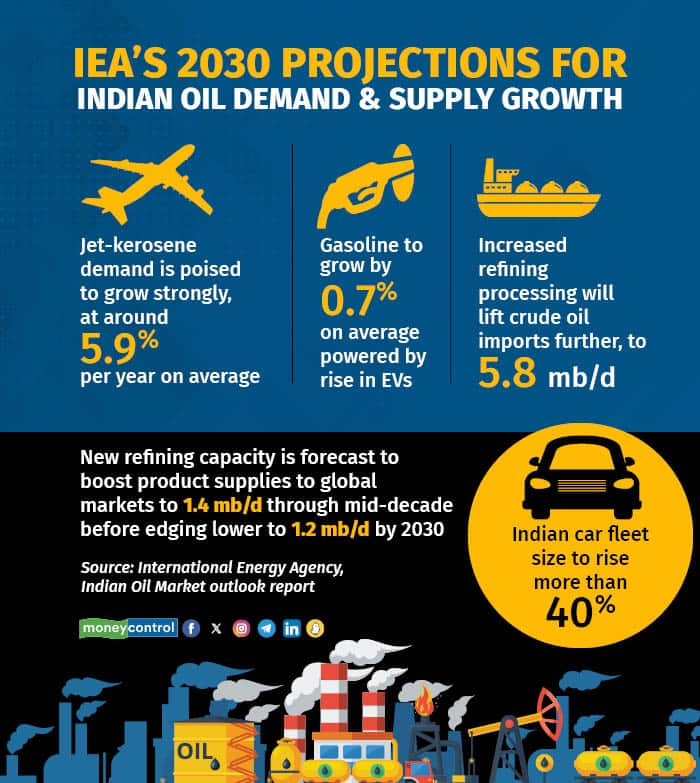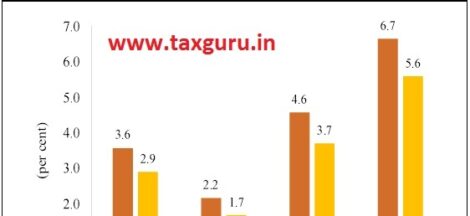NEW DELHI: India, the world’s third-largest oil-consuming and importing nation, will lead global oil demand growth by a large margin, adding a steep 1 million barrels per day by 2030 on the back of stellar economic expansion, IEA said on Tuesday.
The global oil demand is expected to grow by 2.5 million barrels a day by the end of the decade, reaching a plateau near 105.5 million barrels per day (bpd) by 2030, the International Energy Agency (IEA) said in its latest report released Tuesday.
Barring any major disruption to the oil market, the world is expected to remain well supplied through the end of the decade, the global energy watchdog said, though rising geopolitical risks in the Middle East and unresolved trade tensions could cast a shadow over the outlook.
IEA forecast India’s demand for crude oil, which is converted into fuels like petrol and diesel in refineries, to rise from 5.64 million bpd in 2024 to 6.66 million bpd in 2030.
The country meets over 95 per cent of its oil needs through imports as domestic production is declining.
“India’s oil demand will increase by a steep 1 million bpd over the forecast period – more than any other country – in the wake of stellar GDP expansion, at an average annual rate of 2.8 per cent,” it said.
The United States, the world’s top oil consumer, may see demand peaking at 20.47 million bpd in 2025 (20.42 million bpd in 2024) before starting to fall and may end at 20.01 million bpd in 2030.
Demand for industrial-linked products will only marginally lag the growth rate for retail-oriented transport fuels, with annual increases in gasoil, naphtha and LPG/ethane of 3.3 per cent, 2.0 per cent and 2.5 per cent, respectively.
For gasoil (diesel), making up around one-third of India’s total oil use, this amounts to an aggregate gain of 3,80,000 bpd over the forecast period, buoyed by secular trends such as urbanisation, industrialisation and the building out of the country’s infrastructure.
Expansion in the petrochemical feedstocks tracks the launch of new projects coming on stream with the widespread adoption of clean cooking acting as an additional boost to LPG demand.
Government subsidy programmes have been instrumental in this respect, in particular, the Pradhan Mantri Ujjwala Yojana scheme launched in 2016 that aims to provide LPG connections across the country, replacing traditional cooking methods, IEA added.
The report, Oil 2025, stated that while global demand growth continues, structural changes in supply and consumption patterns are expected to reshape the oil market over the coming years.
While production capacity is forecast to rise by more than 5 million bpd to 114.7 million bpd by 2030, electric vehicles are projected to displace 5.4 million bpd of oil demand globally by 2030.
Electric car sales reached a record 17 million in 2024 and are expected to surpass 20 million in 2025, the report said.
China, which has been the biggest driver of global oil demand for over a decade, is expected to see its consumption peak in 2027 due to increased electric vehicle adoption, high-speed rail expansion and natural gas-powered trucks.
On crude oil production, IEA said Indian production is expected to decline marginally by 30,000 bpd to 6,70,000 bpd by the end of the decade.
By 2030, China will retain its status as the world’s largest refiner, with capacity rising to 19.5 million bpd, even though excess capacity will remain at nearly 2.2 million bpd. The United States follows at 17.7 million bpd, with India at 6.8 million bpd, just behind Russia at 7.1 million bpd.
Source: The Pioneer




 India’s Largest Gati Shakti Multi-Modal Cargo Terminal Inaugurated In Gurugram
India’s Largest Gati Shakti Multi-Modal Cargo Terminal Inaugurated In Gurugram 